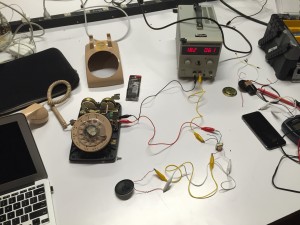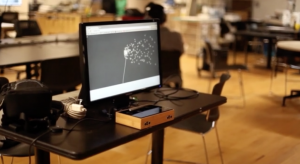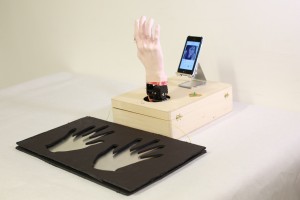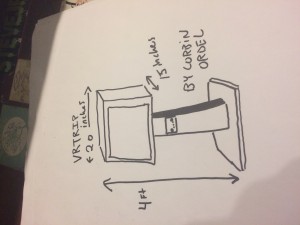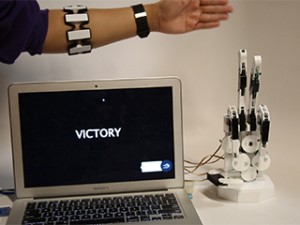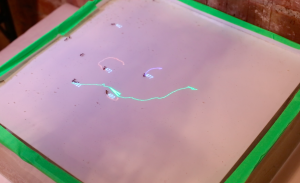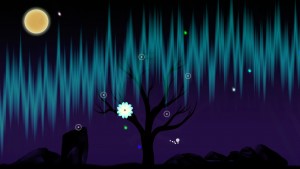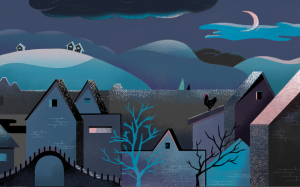Chino Kim, Aaron Montoya-Moraga
A Rube Goldberg telephone that tangibly processes and translates conversation between two people, creating a fun audiovisual experience using various old and new communications technologies and producing unexpected outcomes.
Description
Using Morse code, language translation and optical character recognition, our contraption processes and manipulates conversation between two hacked rotary phones. Each step in the chain reaction is a tangible experience and occasionally distorts the message as it passes it along.
A one-way transmission may look like this:
Someone speaks into phone 1 > their sentence gets tapped out on a Morse key by a solenoid > the resulting Morse code gets translated back to English and then to Spanish > the Spanish string is spoken by the machine and then gets translated back to English > the resulting sentence gets printed out by a thermal printer, a camera takes a photo of the printed text and the text gets pulled out of the image using OCR. Both the camera view and the OCR output would be shown on a display > the resulting sentence is then spoken through the earpiece of phone 2.
To do:
– Reverse the signal flow when going from phone 2 to phone 1.
– Use audio thresholds to control the direction of transmission and properly route audio signals.
– Play hold music in phone earpieces while message is being processed.
– Improve OCR (crop photo, error handling).
– Implement autocorrect so that words mangled by Morse or OCR get converted to actual words before they’re passed off to the next step (Google search suggestions API).
– Code ringer behavior – if one phone is picked up, the other rings (we are already able to make the phones ring, we just need to program the Arduino to control them).
– Build/buy stands and mounts for each “station” (two phones, Morse, translation, OCR).
– Write an Arduino program that will control a light bulb progress bar (we already have the relays and wiring in place for this).
– Write a Morse code program that will convert the signals tapped out on the Morse key back to English (this isn’t a priority since we can fake it and use the English string from the previous step).
Classes
Introduction to Computational Media, Introduction to Physical Computing

